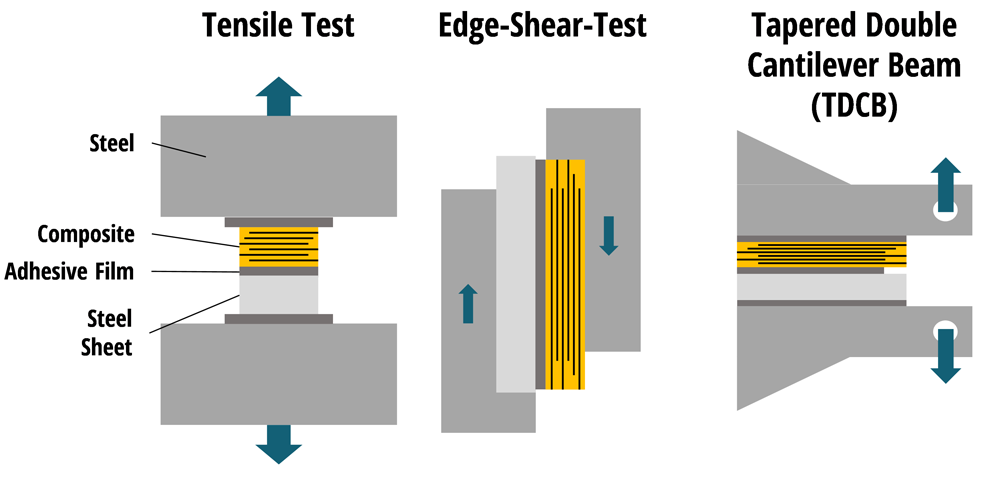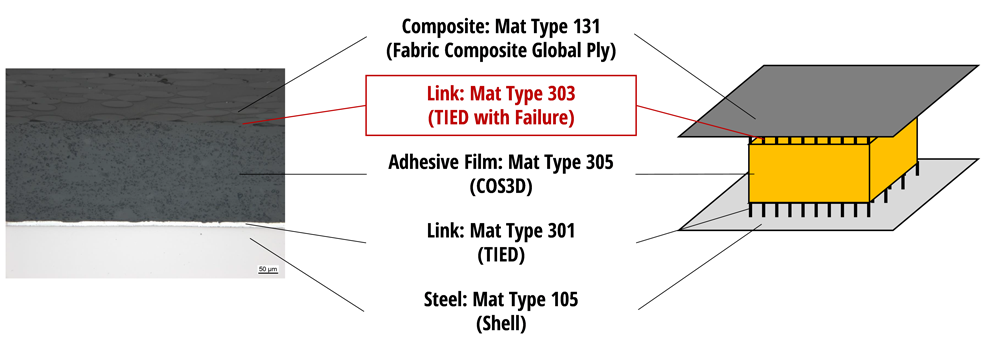MoFa
Modellbildung und Prozessberechnung von pressgefügten Faserverbund-Metall-Bauteilen zur Berücksichtigung von fertigungsinduzierten Grenzschichteinflüssen in der Struktursimulation
Engl.:
Modeling and process simulation of fusion‑bonded composite-metal components considering manufacturing-induced interface effects in structural simulation
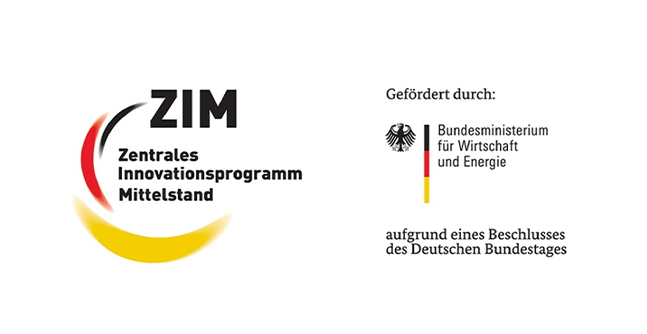
Info
- Project Term: 01.01.2021 - 31.12.2022
- Project Partner: ifs - Institute of Joining and welding, TU Braunschweig
- Form of Funding: ZIM Cooperation
- Funding Code: KK5073101HD0
- Funding Body: BMWi
- Executing Organization: AiF Projekt GmbH
Project Partners
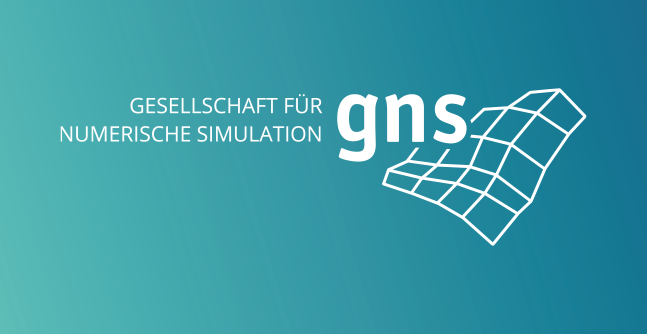
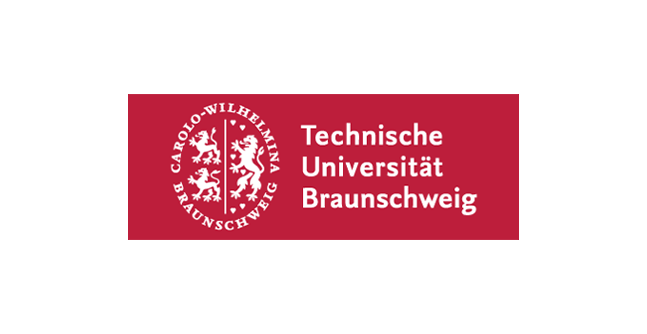
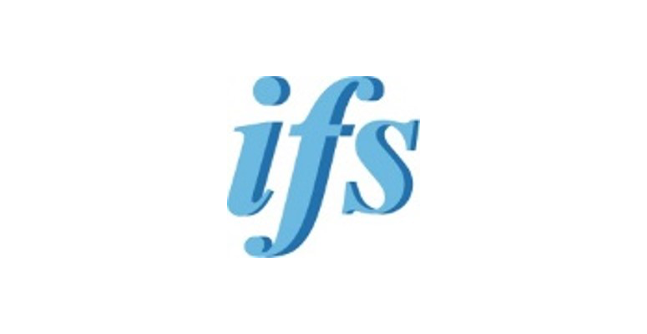
In fusion bonding processes between metals and thermoplastic fiber composites, the thermoplastic matrix is heated above its melting temperature and bonded to the metallic joining partner using pressure. This can be done either by direct bonding of the joining partners or by using an adhesive film. In the design of the body-in-white, a virtual preview is fundamental to the successful use of hybrid components. Both the composite material as well as its connection must be represented in the FE models. Using new material models and higher computing power does not normally improve the prediction quality significantly.
However, a significant increase can be achieved when considering the manufacturing history, in which various processes take place that can influence component properties. Different expansion coefficients, an inhomogeneous temperature distribution and reduced mechanical properties at high temperatures can cause damage in the adhesive film and the interface between the fiber composite and the steel partner, and even result in failure.
The damage caused by the manufacturing process is to be represented numerically by using an appropriate damage model. The associated material properties will be determined and a method will be developed to simulate the manufacturing process of fusion‑bonded hybrid components. In this context, the modeling of the interface layer is of central importance, since it is the weakest link in the chain. The resulting interface degradation due to the manufacturing process has not yet been considered separately.
The main objective of this project is to develop a method that considers these process-induced effects in crash simulations, to improve the prediction quality of thermoplastic composites and to enable a more efficient use of hybrid components in the body-in-white.
Based on this method, a software tool will be developed that can transfer mechanical properties modified by the process history to the structural simulation. The developed methodology will be used to perform crash simulations on a car model to find potential hybrid components and to ensure that it works well on the vehicle level.


